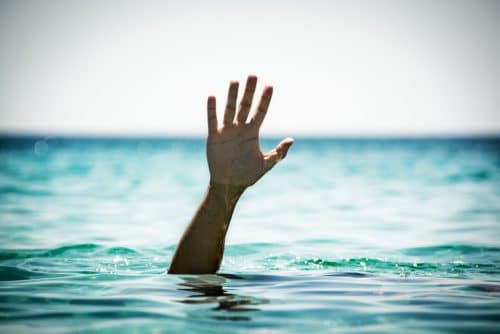Learn the true signs of drowning to stay safe this summer.

Across California and Arizona, we are lucky to enjoy swimming weather through much of the year. But now that spring and summer are in full gear, we spend plenty of time in pools, oceans, and lakes. While swimming is so much fun, it can present dangers — including the all-too-real risk of drowning.
On television and in movies, drowning is portrayed as a very noticeable thing: splashing, shouting, arms waving, etc. Everyone notices a drowning person or child, so it is easy to send help. Yet in real life, drowning does not look like this at all, which means that it is far too easy for someone who is drowning to not receive the help they need — and to die as a result.
Knowing what drowning really looks like can help keep you, your kids, and other loved ones safe this summer. After motor vehicle accidents, drowning is the second most common cause of accident deaths of children between the ages of 1 and 14 in the United States. Understanding the common signs of drowning — and paying close attention to children as they swim — can help prevent drowning accidents.
If you are at the pool, ocean, or near a lake or other body of water this summer, instead of watching for the television or movie signs of drowning, be alert for these signs:
- No Calling for Help: a person who is drowning won’t be able to breathe, so they won’t be able to speak. The person will sink below and reappear above the surface of the water, without time to exhale, inhale and call out for help.
- Upright in the Water: a person who is drowning can’t kick, and will generally only struggle for 20 to 60 seconds before going under.
- No Waving for Help: a drowning person will instinctively extend his or her arms to the side and press down to lift his mouth out of the water. A child may extend their arms forward. A drowning person will not typically be able to use their arms to swim or move towards someone who is trying to rescue them or to reach for a life preserver.
- Glassy, Unfocused or Closed Eyes
- Head is Low in the Water: a drowning person’s mouth will be at water level, or his head will be tilted back with the mouth open. A child’s head may fall forward.
- No Distress: A drowning person will generally not appear to be drowning. They may just seem to be looking up at the sky. Ask the person if they are alright. If they don’t answer, then you probably have less than 30 seconds to get to them.
- Quiet: Children playing in the water make noise. If they are quiet, you need to find them and learn why.
Learning the true signs of drowning can be critical to preventing drownings this summer and throughout the year, particularly because so many of us mistakenly believe that drownings look very different than they actually do.
If you or a loved one has been involved in any type of accident, including a swimming injury, an experienced personal injury attorney can help. Contact the Law Offices of Larry H. Parker today at 800-333-0000 or info@larryhparker.com to learn about how we can help if you have been hurt. We offer free initial consultations and never charge a fee unless we get money for you.



